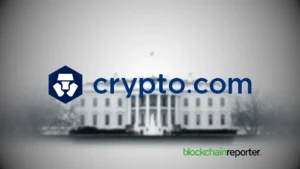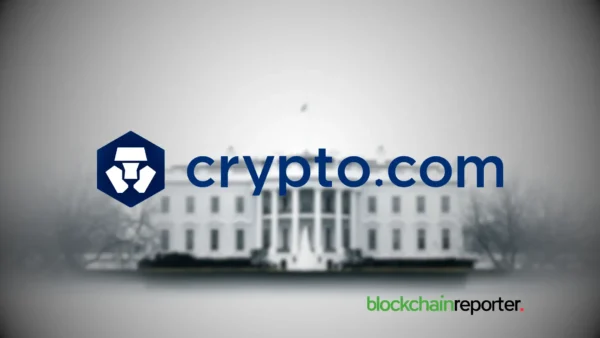
The cryptocurrency market experienced a number of events in 2022 that challenged or altered the beliefs of investors in digital assets, particularly stablecoins. Recent collapses of some of the most renowned stablecoins have dealt a severe blow to the crypto world. All of these incidents led people to question if stablecoins are genuinely stable. Many believe the main culprits to be the lack of decentralization, capital efficiency, and stability in the current stablecoin landscape.
In light of these concerns and to combat the exploitation of crypto investors in the name of stablecoins, Helio Protocol has introduced a groundbreaking concept: “destablecoins.” With this innovative solution, Helio Protocol aims to revolutionize the stability of cryptocurrency by offering a decentralized, capital-efficient, and stable option to investors.
In the world of cryptocurrency, a new asset class has emerged – destablecoins – which seeks to clarify the current state of the stablecoin market. Despite some confusion around the term, it’s important to note that the prefix “de-” in destablecoin refers to decentralization rather than instability, which is commonly associated with cryptocurrencies like Bitcoin.
Unlike stablecoins that rely on fiat-based currencies, such as the US dollar, to achieve complete price stability, destablecoins are collateralized by decentralized, liquid-staked crypto assets. While destablecoins are not subject to high levels of volatility, they may experience some price fluctuations similar to those seen in traditional fiat currencies due to changes in reference rates and interest rate parities determined by the open market.
What is Helio Protocol?
Built on the Binance BNB Chain, Helio Protocol is an open-source liquidity protocol that allows users to earn yield on its native destablecoin HAY. Unlike traditional stablecoins, destablecoins are collateralized by highly liquid staked assets. HAY, in particular, is over-collateralized by BNB and can be redeemed for $1 worth of cryptocurrency at any time. Users can mint and borrow HAY by offering BNB or BUSD as collateral, which can then be used for liquidity mining, yield generation, and value transfer.
As Helio Protocol continues to develop, it plans to introduce its governance token, HELIO, which will transform the protocol into a decentralized autonomous organization (DAO). This will give the community the power to govern the treasury, revenue pool, and the protocol’s future. To summarize, the Helio Protocol comprises three key components:
- Collateralize: Helio Protocol offers users the ability to make use of their BNB holdings as collateral and fully participate in the larger Helio ecosystem by becoming a staker in Binance through the utilization of the BNB Liquid Staking functionality. They have the ability to either borrow HAY stablecoins against it or receive a yield on their collateralized BNB holdings.
- Borrow: With Helio Protocol, users who have collateralized BNB holdings can obtain a loan that is denominated and paid back in HAY destablecoins.
- Earn: In the Helio Revenue Pool, Helio Protocol records both the staking rewards from collateralized BNB and the borrowing interest that it has accumulated. After that, the HAY rewards will be redistributed among the HAY liquidity providers via the Helio Revenue Pool (and stakers). The more HAY that users hold or stake, the larger the return on their investment will be.
The talented team behind Helio, consisting of DeFi experts and skilled smart contract developers, created the revolutionary HAY destablecoin to become the most widely used stablecoin on the market. By utilizing Proof-of-Stake (PoS) rewards, Binance Liquid Staking, and yield-bearing assets, Helio aims to incentivize borrowers and stakers to participate in a new decentralized economy of scale.
Through their efforts, the Helio team seeks to promote the adoption of blockchain technology into the mainstream. By offering an innovative and user-friendly platform, Helio aims to attract more users to the DeFi space, ultimately leading to greater adoption and integration of blockchain into everyday life.
What Makes Helio Protocol Unique?
In the past several years, there has been a proliferation of multiple decentralized stablecoin initiatives, which has led to fierce competition among these projects in an effort to acquire market share. A great number of stablecoin systems have taken things too far or are overly dependent on a single model (fully collateralized or completely algorithmic with lack of backing).
Collateralized stablecoins either come with a custodial concern or require over-collateralization to be performed on-chain. These products offer a pretty tight peg with a greater degree of confidence in comparison to alternatives that are solely based on algorithmic processing. Purely algorithmic models that mirror the original Bitcoin concept of decentralized currency, such as Basis, Empty Set Dollar, and Seigniorage Shares, appear trustworthy and scalable but lack price stability.
The Helio Protocol aims to solve the problem of inefficient capital use that is caused by over-collateralized stablecoins by giving users the ability to increase their funds’ leverage through the use of a collateral debt position (CDP). Issues with frozen funds (backed by fiat) or retained value lost (algorithmic) due to price fluctuations could be avoided by Helio Protocol with the support of Liquid Staking, MakerDAO model capabilities, and enhanced liquidity from LPs on decentralized exchanges.
Helio Protocol was developed using Proof-of-Stake (PoS) rewards, BNB Liquid Staking, and yield-bearing assets. Their goal is to position the world-class revolutionary HAY destablecoin as the most frequently used one. The Helio stablecoin (HAY) project’s objective is to position itself as the benchmark rate enabler for the stablecoin ecosystem.
Main Features of Helio Protocol
With the BNB-backed destablecoin HAY, Helio Protocol attempts to fundamentally revolutionize the entire stablecoin market. The following are the main features of Helio protocol:
1. Collateral Assets
In exchange for the collateral someone places in the Helio ecosystem, a user will get HAY. The collateral accepted will be BNB tokens. The HAY can be staked to earn a return, and the benefits will be paid out in HELIO, the Protocol’s governance token. In addition, the incentives are calculated dynamically based on the rewards rate and the user’s total HAY debt. For initiating a Dutch auction, customers can also receive a set fee (tip) and a dynamic percentage (chip).
2. Liquid Staking
As an upgraded version of staking on the BNB Chain, Liquid Staking enables users to utilize the benefits of the Proof-of-Stake (PoS) network that is the BNB Chain. The whitepaper verifies that this feature suggests that users must encrypt their assets with a central node. Also, users do not have to wait a long time to receive their benefits for staking their tokens because they are given a free-to-use token representing their earnings. According to the Helio Protocol whitepaper, BNB Liquid Staking will not utilize favored validator nodes to stake BNB from consumers. By selecting multiple suitable and trustworthy BNB Chain validators, the protocol will decentralize BNB Liquid Staking one validator at a time.
3. Yield-bearing Tokens
Helio Protocol employs the notion of yield bearing tokens to enable users to borrow against their interest-bearing position in order to produce additional funds. When collateralized BNB is staked, an interesting automatic conversion of BNB to AnkrBNB (yield-bearing tokens) begins. In other words, the value of 1 AnkrBNB relative to 1 BNB will continue to climb over time. In addition, all collected staking rewards and interest will be returned to the Helio Revenue Pool, where the DAO will determine the next step.
4. Enhanced Capital Efficiency
As previously mentioned, the Protocol converts BNB to AnkrBNB automatically and steadily accumulates staking rewards. The whitepaper affirms that within this time period, the Protocol will serve as a credible replacement for current protocols and a digital system for a wide range of decentralized financial transactions. With the Helio Protocol, users holding BNB as collateral can obtain a loan repayable in HAY destablecoins.
Interest and staking rewards are gathered in the Helio Reward Pool, where the DAO determines how to allocate the funds. Considering HAY is a completely redeemable destablecoin with a plan to create yield on BNB collateral while limiting risk through liquid staking, it is important to point out that the Protocol enables higher capital efficiency. In addition, while the AnkrBNB token can be retrieved at any moment, it takes between 7 and 13 days to withdraw BNB.
Helio Protocol Tokenomics
The destablecoin (HAY) and a governance token (HELIO) are both part of the dual token paradigm that Helio Protocol employs.
1. HAY Destablecoin
The HAY destablecoin is soft-pegged to the US dollar and is decentralized, impartial, and collateral-backed. Those who have collateralized their BNB/BUSD via the Helio Protocol may obtain a loan in HAY against their collateral. CeVault acts as the Helio collateral vault and is responsible for the generation, backing, and maintenance of HAY. These three functions are accomplished through the use of collateral assets that are deposited into CeVault.
By storing collateral assets in CeVault under Helio Protocol, users can borrow HAY. This is how HAY enters circulation and how individuals gain access to liquid funds. Others acquire HAY by purchasing it from brokers or exchanges, or by staking it via LPs on external DEXs. Once generated, purchased, or acquired, HAY can be used similarly to other cryptocurrencies: it is capable of being sent to others and used to pay for products and services.
2. HELIO Governance Token
The HELIO token is the governance token of the Helio Protocol. It is utilized to regulate the allocation of the Helio Revenue Pool and to incentivize users. HELIO is a token compatible with BEP-20. Its fundamental Helio Protocol functions are:
- Platform governance
- Participants incentivization
- Voting on improvements (add a new vault, change protocol parameters and fees, etc.)
In a manner analogous to that of HAY, HELIO tokens can, at the user’s discretion, either be traded or put into a farming pool on a DEX in order to enhance the user’s capital efficiency and multiply their yield. Note that the specific date for the token generation event (TGE) will be disclosed in near future.
Helio Protocol Roadmap
The BNB chain is the object of Helio’s initial phase of expansion. This includes increasing the number of applications that use HAY that require collaborating with DeFi protocols on the BNB Chain and impacting reward emission by making use of native tokens from a number of different DeFi protocols. They also aim to use HELIO tokens and HAY liquidity pools throughout decentralized exchanges in order to actively promote the preservation of the peg.
The Helio team wants to make it easy for other DeFi efforts to build on top of HAY, and they also want to unleash the potential for DeFi composability so that HAY stakers can increase their rewards for participating. Additionally, the team plans to increase the HAY supply to a total of $1 billion.
The second phase focuses on expansion as well as governance. They will enable single stake pools for HAY while also upgrading the protocol to support numerous chains. The development team intends to establish Helio community governance and include more Proof-of-Stake (PoS) tokens as collateral in their plans.
The third phase focuses on the widespread adoption of the technology. The Helio team’s long-term goal is to get their base pairs listed on centralized exchanges, and in the meanwhile, they intend to interface with major FinTech apps so that they may be used in everyday life.
Final Thoughts
Together with an open-source liquidity protocol, the new destablecoin asset class is one of the things that the Helio Protocol brings to the table. The objective of the initiative is to provide customers with an innovative method to produce long-term yield and unleash liquidity for their cryptocurrencies.
Helio Protocol’s overarching goal is to make a sizable contribution toward the decentralization of financial services by developing an upgraded version of stablecoin solutions that have previously shown to be effective and by placing an additional emphasis on security and capital efficiency. By enabling stakers and borrowers to get involved as part of a new decentralized economy of scale, the Helio team is helping to propel blockchain technology into mainstream use, which is beneficial to the overall blockchain industry.









